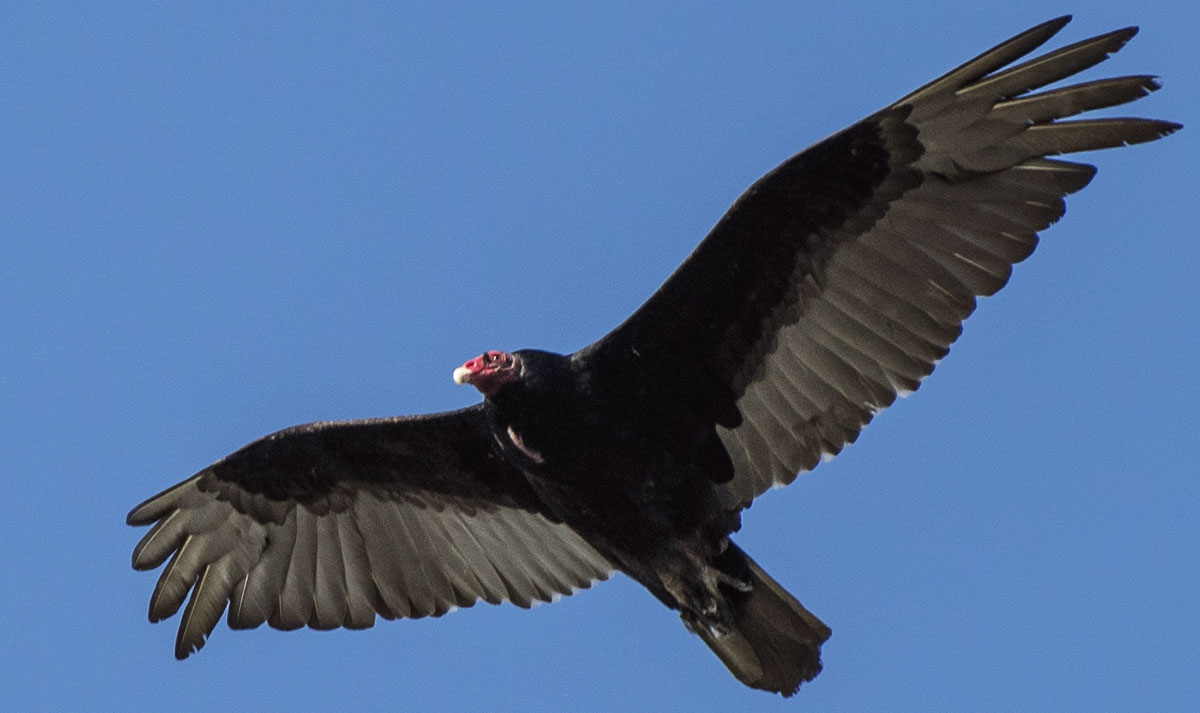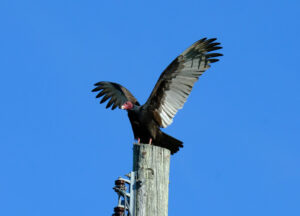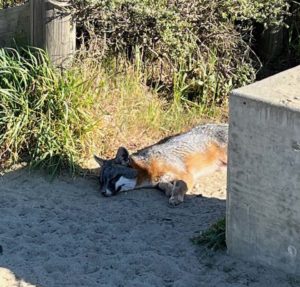I am a nature guide with WildCare and kids ask me all the time, “why are turkey vultures’ heads red?” My question is what is the adaptive value of a red head? –Ellen Shehadah, Inverness, CA
As an environmental educator myself, I love pointing out the incredible adaptations that all organisms have when I’m out leading a nature walk, and the humble turkey vulture has plenty of fun ones. Their distinctive “wobbly” flight incurs only a minimal amount of flapping, allowing them to conserve energy as they ride thermals in search of sweet, sweet carrion. While most birds are not known to have a keen sense of smell, the turkey vulture’s large nostrils, sensitive to minute amounts of ethyl mercaptan, lead them to rotting corpses a mile off. And of course there are the great “icky” adaptations, like the vulture’s tendency to projectile vomit at threatening creatures, or the habit of defecating down their legs to cool (and possibly disinfect) them. And of course we come to the famous bald head, very helpful for keeping the bird’s cranium carrion-free and clean.
Given a turkey vulture’s dietary habits, all of those adaptations give a distinct and fairly straightforward advantage to the bird, so one would think the bright red color of its noggin would as well. However, after some scouring I cannot find any documentation of an evolutionary “purpose” for the color. That being said, one clue might be that the head doesn’t gain its trademark vibrant red coloration until the vulture is a full-grown adult; juveniles have a dark gray head. The red color, then, might have to do with courtship, signaling to other turkey vultures that the bird is mature; note that both male and female adults have bright red heads. Similarly, the related California condor displays the same color change as it matures, so there might be something here. It’s a nice piece of non-feathered real estate, and seems way less complicated than the red inflatable bladder of the male Greater frigatebird.
This being Thanksgiving week, I’d be remiss to not mention our main subject’s namesake, the wild turkey (which is not native to California). The common name “turkey vulture” does originate in the shared trait of the bright red head, but in wild turkeys only adult males possess such a vermillion dome. Not only are their heads colored, so are the wattles (the flesh around the neck), and the snood, which hangs over the beak. When at ease, these areas are usually light reddish or blue. But when excited, either due to the presence of female or a threat, they become engorged with blood and turn bright red, so it seems quite definitive communication is a key purpose of the bright red heads of turkeys.
In many ways I think the question here says much more about us than it does turkey vultures. As humans we like to attach definitive reasons and causes to the things we see and experience in nature, and the theory of evolution certainly provides us with a fantastic and sturdy structure on which to hang these reasons. At times, however, there may not any adaptive purpose to something. For instance, scientists have wracked their brains trying to figure out what “advantage” scorpions derive from an exoskeleton that fluoresces under UV light, but are still without a definitive answer. It could, perhaps, just be an evolutionary byproduct of whatever material ended up working best for them. It didn’t put them at a disadvantage, so it’s stuck around (and helps arachnologists find their quarry). Facts and knowledge are, of course, fundamentally important to the appreciation and study of nature, but I think the mysteries are what keeps us endlessly enthralled by it.

Ask the Naturalist is a reader-funded bimonthly column with the California Center for Natural History that answers your questions about the natural world of the San Francisco Bay Area. Have a question for the naturalist? Fill out our question form or email us at atn at baynature.org!





